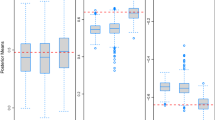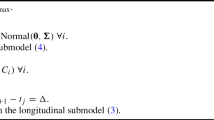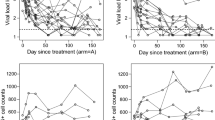Abstract
Joint modeling techniques of longitudinal covariates and binary outcomes have attracted considerable attention in medical research. The basic strategy for estimating the coefficients of joint models is to define a joint likelihood based on two submodels with shared random effects. Numerical integration, however, is required in the estimation step for the joint likelihood, which is computationally expensive due to the complexity of the assumed submodels. To overcome this issue, we propose a joint modeling procedure using the h-likelihood to avoid numerical integration in the estimation algorithm. We conduct Monte Carlo simulations to investigate the effectiveness of our proposed modeling procedures by evaluating both the accuracy of the parameter estimates and computational time. The accuracy of the proposed procedure is compared to the two-stage modeling and numerical integration approaches. We also validate our proposed modeling procedure by applying it to the analysis of real data.

Similar content being viewed by others
References
Albert PS (2012) A linear mixed model for predicting a binary event from longitudinal data under random effects misspecification. Statist Med 31(2):143–154
Bates D, Maechler M, Bolker B, Walker S, Christensen RHB, Singmann H, Dai B, Scheipl F (2012) Package ‘lme4’. CRAN R foundation for statistical computing, Vienna, Austria
Bernhardt PW, Zhang D, Wang HJ (2015) A fast em algorithm for fitting joint models of a binary response and multiple longitudinal covariates subject to detection limits. Comput Statist Data Anal 85:37–53
Christian NJ, Ha ID, Jeong JH (2016) Hierarchical likelihood inference on clustered competing risks data. Statist Med 35(2):251–267
Elashoff R, Li N (2016) Joint modeling of longitudinal and time-to-event data. CRC Press
Fieuws S, Verbeke G (2006) Pairwise fitting of mixed models for the joint modeling of multivariate longitudinal profiles. Biometrics 62(2):424–431
Guo X, Carlin BP (2004) Separate and joint modeling of longitudinal and event time data using standard computer packages. Am Statist 58(1):16–24
Ha ID, Park T, Lee Y (2003) Joint modelling of repeated measures and survival time data. Biometric J J Math Methods Biosci 45(6):647–658
Ha ID, Sylvester R, Legrand C, MacKenzie G (2011) Frailty modelling for survival data from multi-centre clinical trials. Statist Med 30(17):2144–2159
Ha ID, Jeong JH, Lee Y (2018) Statistical modelling of survival data with random effects: h-likelihood approach. Springer
Henderson R, Diggle P, Dobson A (2000) Joint modelling of longitudinal measurements and event time data. Biostatistics 1(4):465–480
Hui FK, Müller S, Welsh A (2017) Hierarchical selection of fixed and random effects in generalized linear mixed models. Statistica Sinica pp 501–518
Hwang YT, Tsai HY, Chang YJ, Kuo HC, Wang CC (2011) The joint model of the logistic model and linear random effect model: An application to predict orthostatic hypertension for subacute stroke patients. Comput Statist Data Anal 55(1):914–923
Hwang YT, Wang CC, Wang CH, Tseng YK, Chang YJ (2015) Joint model of multiple longitudinal measures and a binary outcome: an application to predict orthostatic hypertension for subacute stroke patients. Biometric J 57(4):661–675
Lee Y, Nelder JA (1996) Hierarchical generalized linear models. J Royal Statist Soc Ser B (Methodol) 58(4):619–656
Lee Y, Nelder JA, Pawitan Y (2017) Generalized linear models with random effects: unified analysis via H-likelihood, 2nd edn. Chapman and Hall/CRC
Liu D, Albert PS (2014) Combination of longitudinal biomarkers in predicting binary events. Biostatistics 15(4):706–718
Misumi T, Matsui H, Konishi S (2019) Multivariate functional clustering and its application to typhoon data. Behaviormetrika 46(1):163–175
Rizopoulos D (2012) Joint models for longitudinal and time-to-event data: with applications in R. Chapman and Hall/CRC
Yu T, Wu L, Gilbert PB (2017) A joint model for mixed and truncated longitudinal data and survival data, with application to hiv vaccine studies. Biostatistics 19(3):374–390
Author information
Authors and Affiliations
Corresponding author
Additional information
Publisher's Note
Springer Nature remains neutral with regard to jurisdictional claims in published maps and institutional affiliations.
Rights and permissions
About this article
Cite this article
Misumi, T. Joint modeling for longitudinal covariate and binary outcome via h-likelihood. Stat Methods Appl 31, 1225–1243 (2022). https://doi.org/10.1007/s10260-022-00631-8
Accepted:
Published:
Issue Date:
DOI: https://doi.org/10.1007/s10260-022-00631-8




